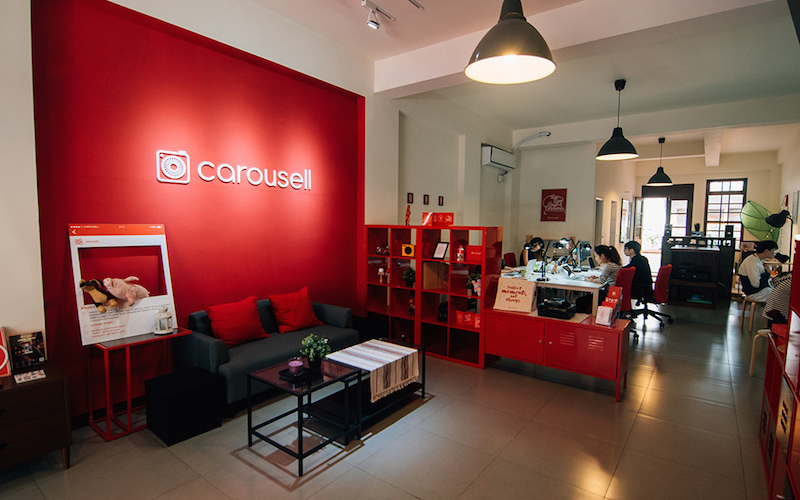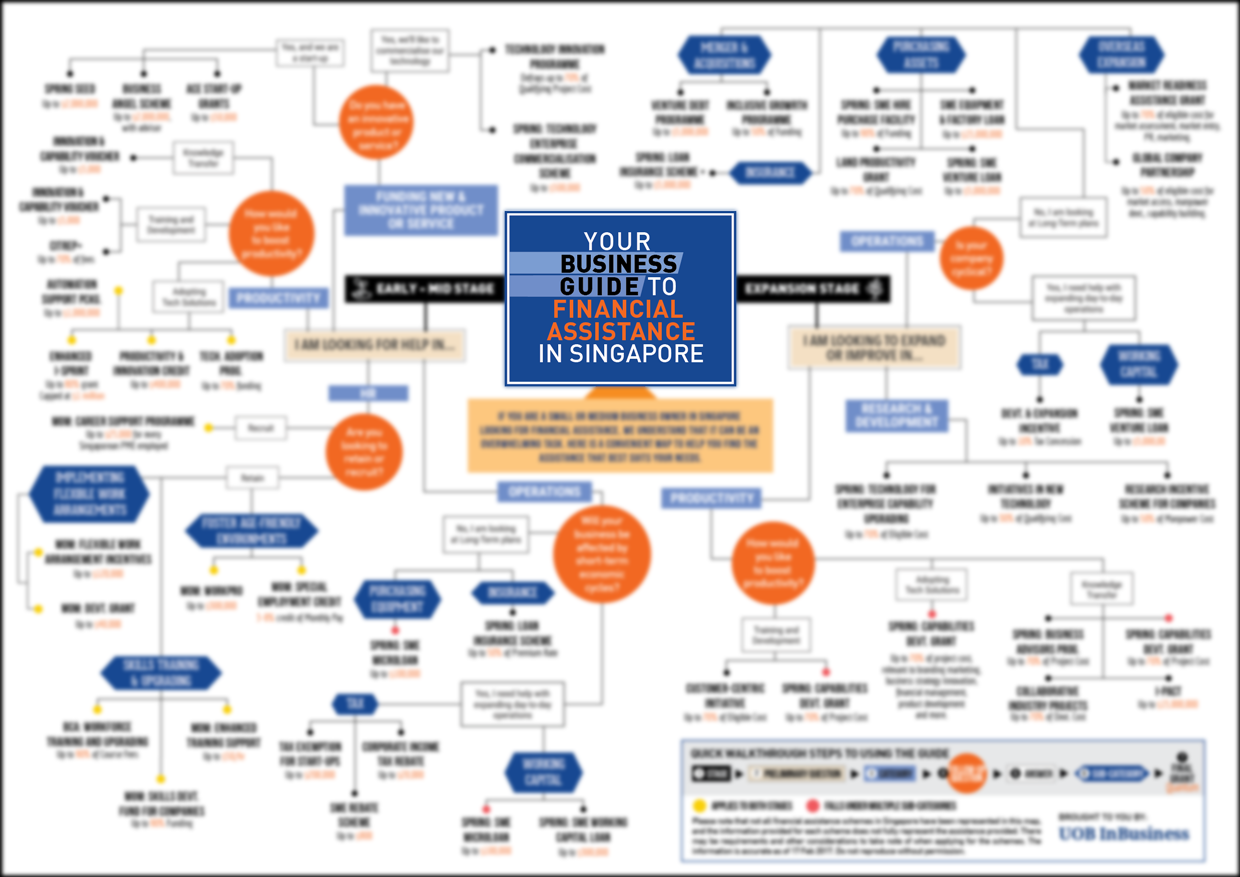You are now reading:
4 ways SMEs can win the talent war acquisition against MNCs
1 of 3



Starting or growing a business? Enjoy more than S$4,000 savings now with essential solutions. T&Cs apply.
Find out more
Your go-to sustainability guide. Get your customised report today by taking the quiz now.
Take the quizyou are in GROUP WHOLESALE BANKING


You are now reading:
4 ways SMEs can win the talent war acquisition against MNCs
In the era of Apple, Facebook and Google, the war for talent acquisition seems like an impossible one. How can SMEs compete with corporate giants' undeniably attractive employment packages and perks?
In the tale of David and Goliath, David's wits - not his size, won him the battle. Similarly, SMEs have advantages when it comes to hiring in the competitive job market, even if it's not immediately recognisable.
Here are 4 ways SMEs can tap on their strengths to get ahead in the talent acquisition curve:

You may ask: "But just about every company offers internships these days - so how do we compete against the large corporates?"
Oswald Yeo, Co-Founder and CEO of Glints, an online talent recruitment and career discovery platform headquartered in Singapore, sums up a solution for employers: "When companies don't have a 'brand' yet to sell the job, the duty falls on the founders / evangelists to actively sell the role. You'll need to understand what each particular candidate is looking for."
Would you rather be a small fish in a big pong, or a big fish in a small pond? In a MNC, the job scope and role tend to be pretty fixed and sometimes you may be one out of the thousands of employees, creating a minimal impact on the company's growth. Working at a SME, there is the opportunity to not only make a bigger difference, but there is also a higher possibility of getting exposure to different parts of the business.
"I find that increasingly, young people are looking for learning opportunities - and this is what startups and SMEs, with its diversity of job roles can offer. Emphasize on examples like these when reaching out to candidates, explaining scenarios or work environments that allow them to multi-task and provide a steep learning curve." – Oswald Yeo | Co-Founder & CEO, Glints
During the interview, give your candidates insights into job scenarios they can expect to be involved in. Drill down into the specifics to elaborate on projects where current employees are triple hatting, such as when a project coordinator was tasked to manage distinct work functions like business development, content development and client coordination as part of a day's work, or how a developer transitioned into a management and strategy role within a short time frame.

Personalisation is another strategy that will set you apart from other companies. Tap on social media channels to find out as much about a candidate as possible, so when you reach out to these individuals, you'll be at a better place to tailor your communication to appeal to their interests.
This perspective is one that's undertaken by recruitment strategies and support director at Randstad Sourceright, Jim Stroud. He states, "My experience says that a personalised email works a lot better than any generic template.
I've gone into Facebook and found this software engineer who likes The Avengers, so instead of sending an email that says 'I have an amazing opportunity', I can say 'Captain America needs your help' -- that will attract attention more, knowing that this person likes The Avengers."

Tapping on the right tech tools - like HR data analytics - can give companies a much-needed advantage when recruiting in an increasingly competitive marketplace. However, most SMEs and startups don't possess the large financial resources required to procure these services - most of which come with a hefty price tag attached.
But this is set to change. There are affordable HR analytics SME dashboard and tools available that could help better match and simplify the talent assessment phase, enabling employers to better identify quality hires and reduce new hire turnover.
Such tools could compare answers from potential candidates against responses of high performers in the organisation, and a score that indicates similar working styles could indicate that the candidate is likely to be a good fit for the company.
When you lack the resources and brand awareness to conduct a mass recruitment drive, you'll need to build on other offerings that will compel potential candidates to join your team. And one way to stand out from the rest is to create a culture that's unique to your organisation and resonates with potential candidates.
After all, big isn't always better - in larger companies, culture is often lost as the work environment becomes increasingly "corporate". For SMEs, its size becomes an advantage, as founders can work to instil a family-style team culture that has a stronger focus on personal growth and mentorship, open communication, remote working and flexible work hours and unique employee benefits - elements which are gaining in popularity among employees these days.
And Carousell is a company that has managed to do that.

Source: Carousell
The company has moved beyond providing the usual office perks, to establishing clear communication channels, providing room for growth, guidance from leaders and opportunities for team bonding. For example, the founders make it a point to spend time with the different teams by taking lunch together. And lunch time on Fridays are special; food is catered to the office, and the meal time is spent sharing company announcements, developments and informal interaction.
Ownership is a priority too - with larger companies, employees may have to content with creating minimal impact on the company's growth, as one out of a thousand engineers. But Carousell strives to create a sense of ownership for its staff by keeping team sizes fairly small. Take its engineering team as an example: while the app is currently serving millions of users, the entire team consists of just 23 staff members - giving each individual the opportunity for a varied job scope and steep learning curve.
For SMEs, its size becomes an advantage, as founders can work to instil a family-style team culture that as a stronger focus on personal growth and mentorship, open communication, remote working and flexible work hours and unique employee benefits - elements which are gaining in popularity among employees these days.
Resources for SMEs
IMDA's Talent Assistance
The Talent Assistance scheme provides funding support to develop the capabilities of media practitioners in Singapore.
Global Company Partnership (GCP)
The GCP grant provides support for engagement of third-party recruitment consultancy firms to recruit C-suites and talent both locally and abroad, to spearhead your company's internationalisation plans.
SME Talent Programme (STP)
The STP helps SMEs attract talents from Institute of Technical Education (ITE), Polytechnics and Universities through internships, study sponsorship and fresh hire training.
Click here to get your free high-resolution copy of “Your Business Guide to Essential Financial Assistance for SMEs in Singapore”

Further Readings:

12 Aug 2025 • 7 mins read

30 May 2025 • 3 mins read

29 Apr 2025 • 3 mins read

23 Apr 2025 • 3 mins read